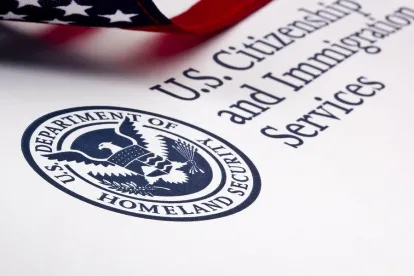John Kelly, Secretary of the U.S. Department of Homeland Security (DHS), issued two memoranda on Feb. 20, 2017 outlining the Department’s plans for immigration enforcement under President Trump’s administration: “Enforcement of the Immigration Laws to Serve the National Interest” and “Implementing the President’s Border Security and Immigration Enforcement Improvements Policies.” Both memoranda implement and provide further details in connection with immigration Executive Orders signed by President Donald J. Trump on Jan. 25, 2017. These memoranda further document the Trump administration’s desire to heighten immigration enforcement and for employers to establish a culture of compliance with U.S. immigration laws.
“Enforcement of the Immigration Laws to Serve the National Interest”
This memo reinforces DHS’s commitment to ramping up enforcement activities performed not only by Immigration and Customs Enforcement (ICE) and U.S. Customs and Border Protection (CBP), but also local law enforcement agencies. The memo limits DHS’s prosecutorial discretion, given broadly by the Obama Administration, and forbids its use to exempt or shield “any category of aliens from enforcement of the immigration laws.” It rescinds all conflicting directives, memoranda, and guidance with the exception of the memorandum, “Exercising Prosecutorial Discretion with Respect to Individuals Who Came to the United States as Children” (known as DACA), dated June 15, 2012, and the Nov. 20, 2014, memo which expanded prosecutorial discretion to protect DACA children as well as parents of U.S. citizens and lawful permanent residents. The Feb. 20 memo emphasizes enforcement of immigration laws, stating that DHS personnel “have full authority to arrest or apprehend an alien whom an immigration officer has probable cause to believe is in violation of the immigration laws.” Specifically, the memo:
-
Sets enforcement priorities.
Aliens prioritized for expeditious removal include those who: (a) have been convicted of any criminal offense; (b) have been charged with any criminal offense that has not been resolved; (c) have committed acts which constitute a chargeable offense; (d) have engaged in fraud or willful misrepresentation in connection with any official matter before a government agency; (e) have abused any program related to receipt of public benefits; (f) are subject to a final order of removal but have not complied with their legal obligation to depart the United States; or (g) in the judgment of an immigration officer, otherwise pose a risk to public safety or national security. In effect, almost every person in the United States who lacks proper immigration documentation or has violated his or her status could be considered a priority under this guidance.
-
Empowers local law enforcement to enforce immigration laws.
The memo does away with the Priority Enforcement Program implemented by the Obama administration and restores a program started under the George W. Bush administration and greatly expanded by the Obama Administration called Secure Communities. The memo also re-emphasizes the powers granted to local law enforcement under the 287(g) program. Secure Communities and 287(g) are programs designed to give local law enforcement the authority to assist with identifying and detaining foreign nationals whom they perceive to be removable. The memo also calls for the devotion of all available resources to the Criminal Alien Program, which requires local law enforcement to assist in initiating removal proceedings against “all aliens incarcerated in federal, state, and local correctional facilities.”
-
Establishes a Victims of Immigration Crime Engagement (VOICE) office.
The VOICE office will serve as a liaison between ICE and known victims of crimes committed by removable aliens, with a view toward ensuring crime victims are given information about the offender. The memo also eliminates Privacy Act rights and protections for persons who are not U.S. citizens or green card holders, broadening the scope of information that can be disseminated to the public through the VOICE office or other means.
In addition, the memo authorizes the hiring of 10,000 new ICE agents and officers; requires the establishment of programs for collecting civil fines and penalties from immigrants and “those who facilitate their unlawful presence”; and requires ICE to provide monthly reports to the public about apprehended immigrants and weekly reports about cities that release aliens from law enforcement custody (sometimes called sanctuary cities).
“Implementing the President’s Border Security and Immigration Enforcement Improvements Policies”
The second memo focuses on enforcement activities along the U.S. border, including the planning and construction of a wall along the border with Mexico. On Feb. 24, 2017, the federal government released a notice soliciting bids to build the wall, stating that the procurement process would be broken down into two phases to be completed by April 2017. In addition to formalizing plans for building the wall, the memo puts forth detention as “the most efficient means by which to enforce immigration laws” at the border. In putting this policy forward, DHS ends prior “catch-and-release” policies in favor of immediate detention of aliens apprehended while trying to cross the border without authorization, with exceptions for aliens who have been granted relief or protection from removal, or aliens who are seeking asylum. The memo directs extensive expansion of detention capabilities.
The memo also: instructs DHS to bolster the manpower available at the U.S. border, adding 5,000 CBP agents and using local law enforcement under 287(g); expands expedited removal for apprehended immigrants, with the exception of unaccompanied alien children and asylum seekers; and instructs DHS officers to exercise their advance parole authority sparingly. Finally, the memo carves out special exceptions and procedures for unaccompanied alien minors encountered at the border and sets forth stricter policies for identifying and punishing smugglers and traffickers of immigrant children.
Takeaways for U.S. Employers
With the new administration’s emphasis on both border and interior enforcement, it is expected that I-9 audits, worksite raids by ICE officers, and investigations by the Immigrant and Employee Rights Section of the Department of Justice will increase significantly. Strict compliance with federal immigration laws is important in the current environment. Employers should consider performing I-9 self-audits, enrolling in E-Verify, and conducting training on immigration policies and procedures in order to limit exposure for potential immigration infractions. It is also very important for employers to be certain that employees on temporary work visas are fully compliant with their status and that any necessary amendments are timely made.



 />i
/>i

